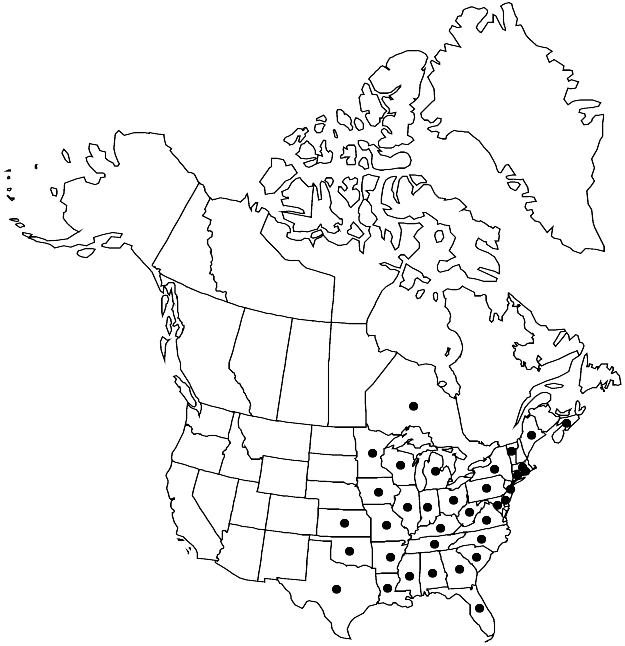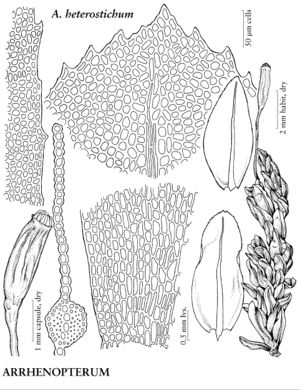Difference between revisions of "Arrhenopterum heterostichum"
Sp. Musc. Frond., 198, plate 46, figs. 1 – 9. 1801.
FNA>Volume Importer |
FNA>Volume Importer |
(No difference)
| |
Revision as of 22:00, 16 December 2019
Plants in small mats, glossy distally when dry, scarcely altered when moist. Stems reddish brown or yellow, weakly complanate-foliate, densely branched, mostly from subfloral branches; rhizoids conspicuous along stem. Leaves with margins revolute on one side (or both) proximally; costa prominent, flexuose, ending before apex, sometimes with short lateral spurs, guide cells often in 2 rows near base, 1 row toward apex. Perigonia sessile; outer leaves short, narrowed to insertion, apex slightly flaring, inner leaves concave basally, scarcely longer than antheridia, margins entire, apex acute, basal laminal cells elongate, larger than distal cells, smooth. Perichaetial outer leaves symmetric, narrowed to insertion, inner leaves narrow, attenuate to long-attenuate. Seta 1–1.5 cm. Capsule 3.5–5 mm.
Habitat: Mineral or humid soil, slopes of ravines, bark at tree bases
Elevation: low elevations
Distribution

N.S., Ont., Ala., Ark., Conn., Del., Fla., Ga., Ill., Ind., Iowa, Kans., Ky., La., Maine, Md., Mass., Mich., Minn., Miss., Mo., N.J., N.Y., N.C., Ohio, Okla., Pa., R.I., S.C., Tenn., Tex., Vt., Va., W.Va., Wis., Asia (China, Japan, Korea, Russian Far East).
Discussion
The range of Arrhenopterum heterostichum in North America corresponds largely to the range of temperate deciduous or mixed deciduous-conifer forest, ranging westward into forested portions of the tallgrass prairie.
Selected References
None.
